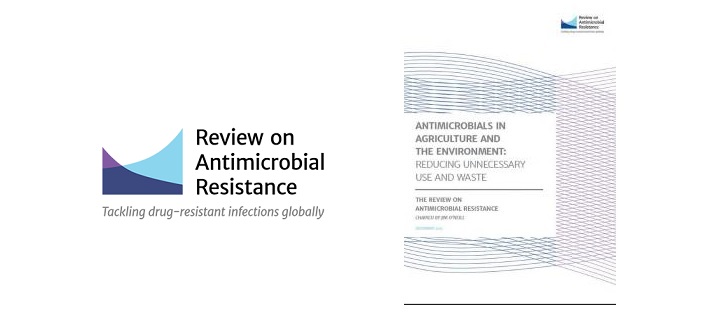The introduction of a global target to reduce antibiotic use in food production to an agreed level per kilogram of livestock and fish, along with restrictions on the use of antibiotics important for humans, is one of three key recommendations included in the newly published independent O’Neill Review on Antimicrobial Resistance (AMR).
The review, commissioned by the UK government, also calls for the rapid development of minimum standards to reduce antimicrobial manufacturing waste released into the environment and for improved surveillance to monitor AMR problems, and future progress against global targets.
The review, which runs to 44 pages, includes many hard-hitting observations and warnings but is also balanced in its assessment of the use of antibiotics in animals as well as in humans.
“The proper therapeutic use of antibiotics in animals is essential for treating infection,” it is stated. “It offers considerable benefits, both in terms of animal welfare and food production.”
The point is also made, however, that “excessive and inappropriate use of antibiotics is undoubtedly a problem in many areas”. In this context, it’s stated that consumption of antimicrobials by animals to produce meat products, in the major emerging economies of Brazil, Russia, India, China and South Africa, is set to double between 2010 and 2030.
There’s also a headline-grabbing point relating to some “last-resort antibiotics” for humans which it says are being “used extensively in animals, with no replacements as of yet on the way”.
“This problem was highlighted by a recent Chinese finding of a bacterial gene conferring resistance to colistin, a last-resort antibiotic for treating multidrug-resistant infections caused by Gram-negative bacteria in humans, but which is also used extensively in livestock in some countries, including in Europe,” states the review.
“This gene is particularly worrying as it can transfer easily from bacteria to bacteria, meaning it could spread quickly. The study also found this gene in 20% of the animals tested in the area and 1% of the people in the area, strongly indicating that the selection of this resistance was due to the use of colistin in animals and that this was capable of transferring to humans. This has brought home the huge threat posed by the use of important human antibiotics in agriculture.”
Mention is also made, however, of the progress being made in countries that have advanced farming systems with very low levels of antibiotic use, particularly in Scandinavia.
“Denmark has combined low use with being one of the largest exporters of pork in the world,” it is stated. “Reducing levels of use to that of Denmark, for example, an average of less than 50 milligram (mg) of antibiotics used a year per kilogram (kg) of livestock in the country, may be a good starting point for such a target (the global reduction target, selected as one of the review’s three key recommendations).




